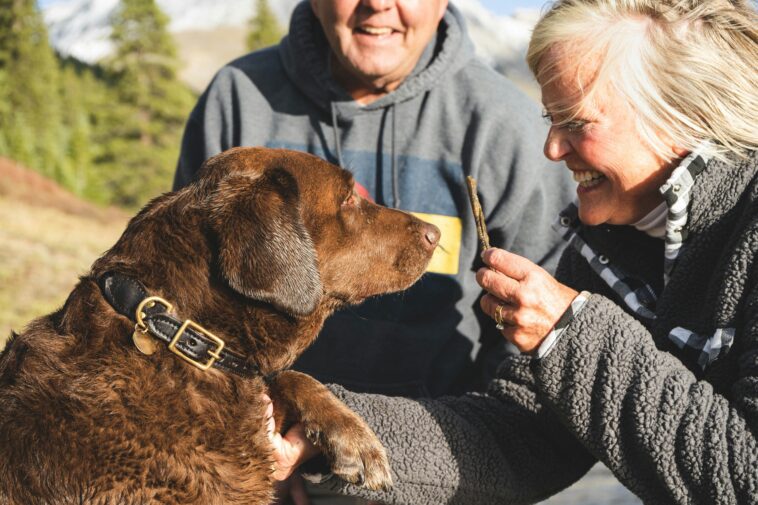Dogs, our ever-faithful companions, possess a unique language of non-verbal cues that go beyond mere barks and tail wags. Unraveling the intricate tapestry of canine behavior is crucial for establishing a strong and meaningful connection with our four-legged friends. In this comprehensive guide, we’ll delve into a myriad of behaviors, shedding light on the nuanced ways our canine companions express themselves.
1. Standing on Hind Legs:

Dogs have a charming way of expressing affection or playfulness by rearing up on their hind legs, akin to humans seeking an embrace.
2. Chewing Furniture:

While puppies may chew to alleviate teething discomfort, adults might engage in destructive chewing as a response to stress. Redirecting this behavior through training and exercise is essential.
3. Barking:

Bark, the universal language of dogs, communicates warnings, distress, happiness, or a simple desire to play. Context is key in understanding their diverse vocalizations.
4. Bringing Their Toys:
The presentation of toys is a symbolic gesture, signifying trust, a request for attention, or an invitation to engage in play.
5. Yawning:
Beyond indicating fatigue, yawning serves as a calming signal, expressing relaxation, anticipation, or stress relief.
6. Stretching:

The morning stretch is not exclusive to humans; dogs use it as a form of greeting and an invitation to play, showcasing their affection.
7. When Leaving Them:
Signs of restlessness or anxiety, such as pacing, may reveal a longing for play or companionship during your absence.
8. Pointing:
Even non-hunting breeds may exhibit pointing behavior, reflecting the innate instincts deeply ingrained in their genetic makeup.

